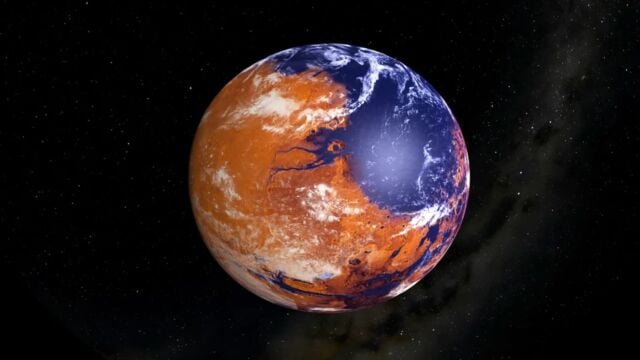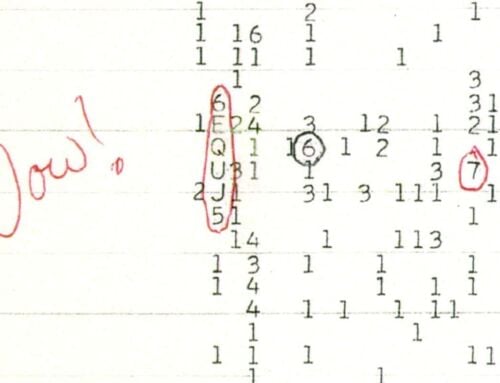 An artist’s concept of an early Mars with liquid water (blue areas) on its surface. NASA/MAVEN/The Lunar and Planetary Institute
An artist’s concept of an early Mars with liquid water (blue areas) on its surface. NASA/MAVEN/The Lunar and Planetary Institute
NASA’s Curiosity rover, exploring the red planet’s Gale Crater is revealing new info on how Mars became uninhabitable.
New information about how Mar’s ancient climate shifted from being possibly life-friendly, with liquid water on its surface, to the harsh, dry conditions seen today.
Ancient Mars shows signs of abundant water, like valley and delta formations, and minerals that only form with liquid water. Scientists believe that billions of years ago, Mars had a thicker atmosphere and was warm enough to support rivers, lakes, and possibly oceans. As the planet cooled and lost its magnetic field, solar winds gradually stripped away much of the atmosphere, leaving the cold desert we see now.
Though Mars is currently too cold and dry to support life, NASA’s rovers are searching for evidence that life may have existed in the past. Using Curiosity’s instruments, researchers have measured the carbon isotopes in minerals from Gale Crater, uncovering new details about how the planet’s climate evolved.
David Burtt of NASA’s Goddard Space Flight Center in Greenbelt, Maryland, and lead author of a paper describing this research published October 7 in the Proceedings of the National Academy of Sciences, explains:
“The isotope values of these carbonates point toward extreme amounts of evaporation, suggesting that these carbonates likely formed in a climate that could only support transient liquid water. Our samples are not consistent with an ancient environment with life (biosphere) on the surface of Mars, although this does not rule out the possibility of an underground biosphere or a surface biosphere that began and ended before these carbonates formed.”
source NASA





Leave A Comment